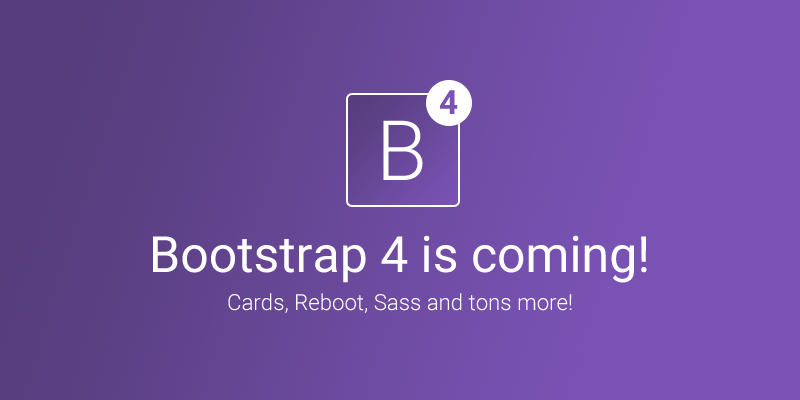Twitter released an interesting and amazing project named, Twitter Bootstrap, in August 2011. Mark Otto and Jacob Thornton developed it as a framework to encourage uniformity across the internal tools.
Basically it’s an open-source JavaScript framework, developed by the Twitter team. It is a combination of HTML, CSS and JavaScript code. It is also known as Front-end framework that helps in building User interface components.
So it’s a free collection of tools for creating websites and web applications. It has HTML and CSS based design templates for typography, forms, navigation, buttons and interface components. It also has optional JavaScript extensions.
Some basic but great advantages of using Bootstrap are:
- It is easier to get started.
- It has extensive series of components.
- It has great grid system.
- It has huge package of JavaScript plugins.
- It has base styling for many of the HTML elements like typography, tables, code, forms, icons, buttons, images.
Versions of Bootstrap
Bootstrap is one of the most starred projects on GitHub.The developers launched the first version of Bootstrap in August 2011. At that time, it lacked responsiveness and featured gradients for its components. In January 2012, they announced Bootstrap 2.0, which became fully responsive. This version introduced a twelve-column grid layout and various components for responsive design.
Bootstrap 3 was launched in August 2013, which was released with the mobile first approach and they went flat and removed gradients. A ton of new features and upgraded grid made it insanely powerful.
Mobile-first approach of Bootstrap 3
The greatest advantage of mobile first approach in Bootstrap 3 is that it brings the extension to a completely different and new horizons, which enables you to create different designs for any of the supported devices. It comes with the fluid design by default and thus your design will flow and look awesome on each type of device. You can decide about which is the most important content for users to view while using the website on small size devices like phones. Almost each and everything has been developed and designed in a way that it starts from a small size screen and scales up more.
The all new Bootstrap 4
In August 2015, the developers deployed the first alpha version of Bootstrap 4, incorporating additional Sass and Flexbox support. They completely dropped support for Internet Explorer 8. Legacy browsers will no longer hold it back, enabling the utilization of better CSS3 techniques. Do not use this alpha version of Bootstrap 4 in production; however, it offers insight into all the new features added, including:
New Reset Module called Reboot
New Reboot module allows to move all generic element selectors and rest styles into a single accessible ‘scss’ file.
Flexbox as optional feature.
Bootstrap 4 won’t support Flexbox and will utilize more traditional float or display table methods. Absence of standard Flexbox integration will lead to IE9+ support. But if one wants to forego this support and want to bump it up to IE10+, then you will have an option to enable Flexbox across your project.
Grouped Cards
Along with standard grid with gutters, you will have an option to group cards together, to remove the spacing in-between and then you can set each column to a uniform height.
Utility Classes
It will allow users to quickly push and align content within uniform increments. It enable the user to quickly and uniformly style a component without creating a specific selector to do so.
JavaScript Rewrite
The developers have rewritten all JavaScript plugins in ES6 to leverage the benefits of the latest specification.
With all these new features, the development plan of Bootstrap 4 includes release of few more alpha releases, two beta releases and two release candidates (RCs) to make sure that the new Bootstrap 4 is all ready and polished for final release.
For more information on Bootstrap, please visit: http://getbootstrap.com/
Certainly, all developers are awaiting the final release of Bootstrap 4, to use its powerful features for faster and easier website and web applications development.
Krify has done immense work using Bootstrap. Our team is excited for the release of new Bootstrap 4. Hire our developers and designers to get your responsive webs and web apps developed using Bootstrap. For our web design and web development services, visit: https://krify.co/website-development/
Drop an enquiry or email us at info@krify.co for solutions to your web development affairs.



